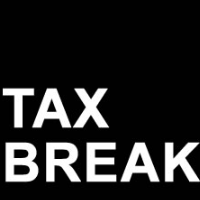Tax Rates Report Originally Suppressed by Republicans Reappears Updated

“Facts,” writer Aldous Huxley once pointed out, “do not cease to exist because they are ignored,” a point driven home this week by the release of an updated version of a government report initially suppressed by Republican senators who disliked its conclusion that tax cuts for the wealthy do not spur economic growth but do contribute to economic inequality.
Originally released on September 14, the report by Congressional Research Service (CRS) public finance specialist Thomas Hungerford was cited widely in the media and attacked mercilessly on the right. Under intense election-year pressure from Republicans, who were running a presidential candidate advocating even more tax cuts for the rich, CRS withdrew the report from circulation on September 28.
Since the presidency of Ronald Reagan, the Republican party has insisted that tax cuts for wealthy “job creators” will spur savings and investment, leading in turn to productivity growth and a rising Gross Domestic Product (GDP). Republicans used this argument to justify tax cuts during the Ronald Reagan and George W. Bush administrations, and are using it today to oppose tax rate increases aimed at balancing the federal budget.
Updated and re-released on December 12, the report reviews data on tax rates, savings, investment, productivity, GDP and income distribution for the sixty-seven years since World War II. The revised edition changes some of the language Republicans found objectionable, for example by changing references to “the rich,” to “high-income taxpayers,” as though a change in words could alter the underlying material reality. The update also clarifies its methodology and includes more citations to arguments in favor of tax cuts.
Nevertheless, the conclusions remain the same. Comparing the claims made for tax cuts to what actually happened, the report finds that the Reagan and Bush tax cuts did not lead to increased savings or investment, enhanced productivity, or economic growth, but they have allowed the wealthy to accumulate an ever-increasing share of the nation’s income.
The report concludes:
“Changes over the past 65 years in the top marginal tax rate and the top capital gains tax rate do not appear correlated with economic growth. The reduction in the top statutory tax rates appears to be uncorrelated with saving, investment, and productivity growth. The top tax rates appear to have little or no relation to the size of the economic pie.…However, the top tax rate reductions appear to be correlated with the increasing concentration of income at the top of the income distribution. As measured by IRS data, the share of income accruing to the top 0.1% of U.S. families increased from 4.2% in 1945 to 12.3% by 2007 before falling to 9.2% due to the 2007-2009 recession. At the same time, the average tax rate paid by the top 0.1% fell from over 50% in 1945 to about 25% in 2009. The statistical analysis in this report suggests that tax policy could be related to how the economic pie is sliced—lower top tax rates may be associated with greater income disparities.”
-Matt Bewig
To Learn More:
Updated and Previously Suppressed Report Still Finds: Tax Cuts for Rich Only Help the Rich (by Jon Queally, Common Dreams)
Taxes and the Economy: An Economic Analysis of the Top Tax Rates Since 1945 (Updated) (by Thomas L. Hungerford, Congressional Research Service) (pdf)
House GOP Blocks Nonpartisan Report that Debunks Tax Cut Mythology (by Matt Bewig, AllGov)
- Top Stories
- Unusual News
- Where is the Money Going?
- Controversies
- U.S. and the World
- Appointments and Resignations
- Latest News
- Musk and Trump Fire Members of Congress
- Trump Calls for Violent Street Demonstrations Against Himself
- Trump Changes Name of Republican Party
- The 2024 Election By the Numbers
- Bashar al-Assad—The Fall of a Rabid AntiSemite






Comments